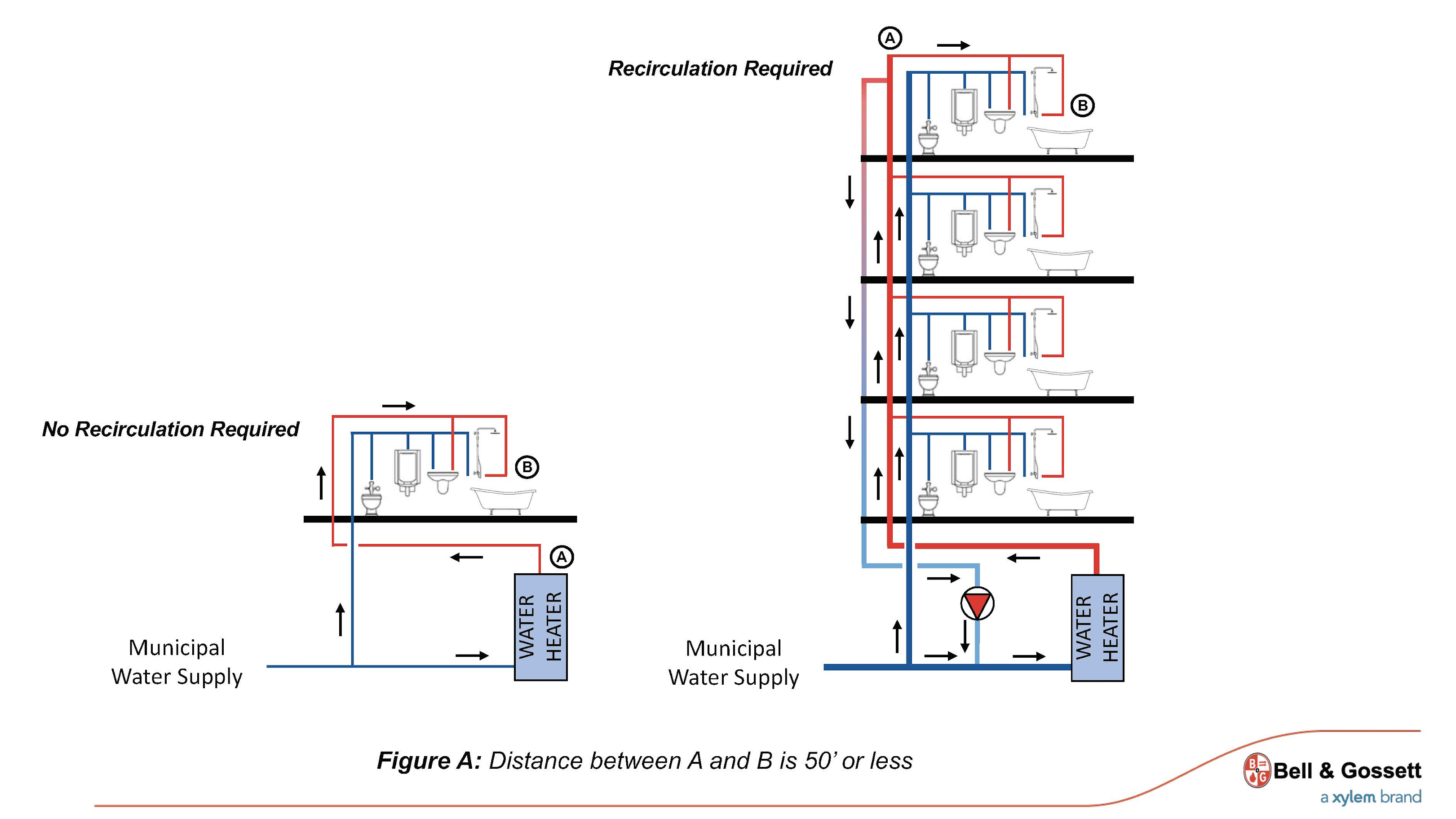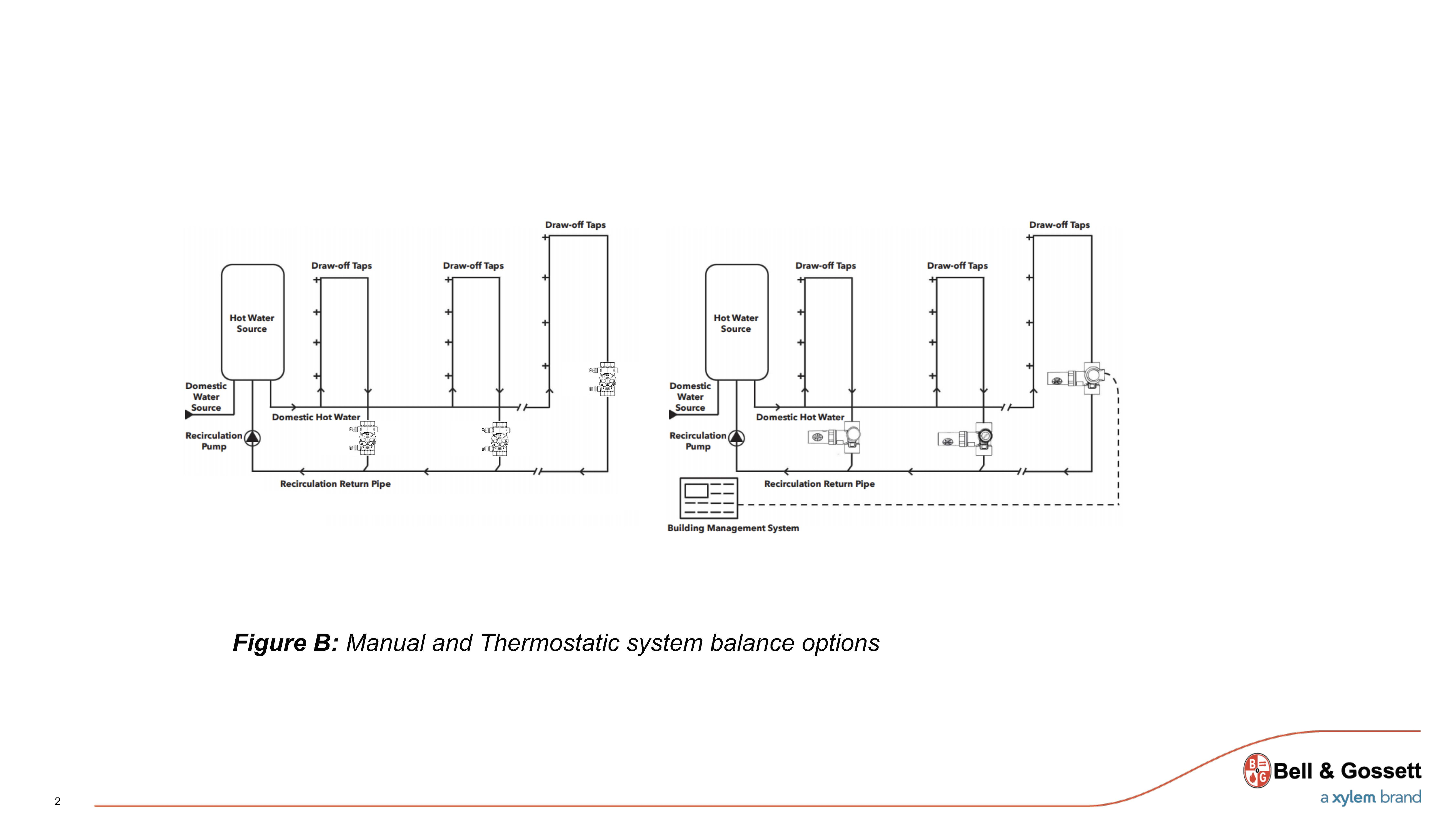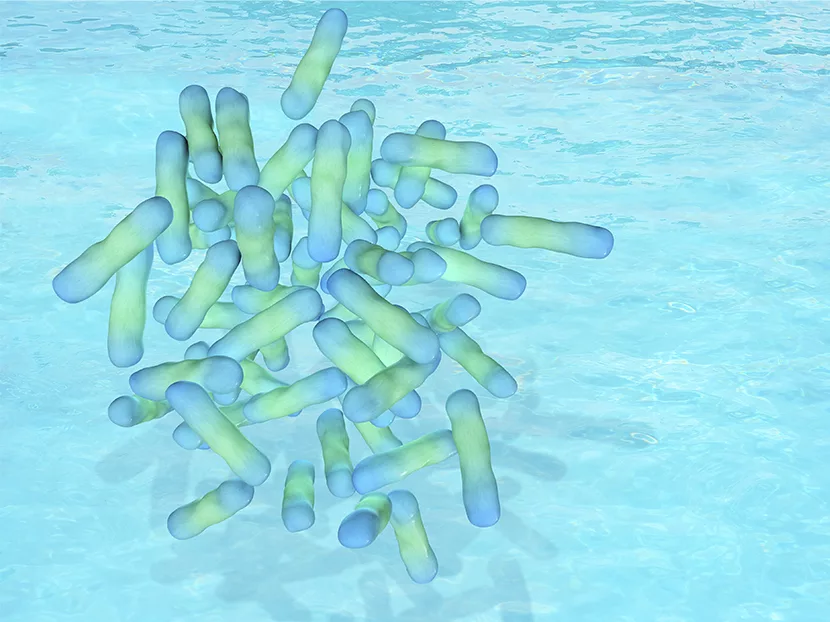In commercial buildings, from offices to hotels to hospitals, there has been an increasing focus on Legionella mitigation to keep facilities safe and their occupants healthy.
Legionella becomes a health risk when it develops in the biofilm of a plumbing system and is spread as water is distributed through the building. A nine-fold increase since 2000 in cases of Legionnaire’s disease coupled with the bleak outcomes for at-risk populations — one in four will die — has brought an urgency to Legionella mitigation (https://bit.ly/3mUzRRC).
Primary sources of exposure to contaminated water in commercial facilities are plumbing and HVAC systems — potable water sources such as domestic hot and cold water and cooling towers or fluid coolers, states the Occupational Safety & Health Administration. The Centers for Disease Control and Prevention notes that more than half of Legionnaires’ disease outbreaks are caused by drinking water, making vital the role of those who design plumbing systems in commercial buildings.
A number of proven technologies effectively destroy the Legionella bacteria. Still, there is no silver bullet that addresses the myriad and complex issues involved in such a solution — safety, practicality, sustainability and cost-effectiveness among them.
Engineers involved in plumbing system design for commercial buildings rely on the ASHRAE Standard 188 and the American Society of Plumbing Engineers’ Design Handbooks to guide design, operation, maintenance, repair, replacement and expansion of a building’s potable and nonpotable water systems and components. OSHA also provides information on the prevention, identification and management of Legionella exposure (www.osha.gov/legionnaires-disease).
These voluntary standards are continually evolving, however, putting a greater burden on plumbing system designers to stay informed on best practices. An additional difficulty for engineers in designing plumbing systems is that the guidelines from government and industry organizations aren’t consistent from group to group.
Suggested energy-saving control strategies fuel the debate when addressing bacteria growth prevention methods for safety. They tend to allow less than recommended water temperatures in portions of the distribution piping or storage vessels before the point-of-use fixtures.
Among the conditions that favor bacteria growth in building water systems — biofilm, scale and temperature — temperature is a primary focus of plumbing system designers. They must first consider the facility's intended use and occupancy, which will aid in deciding system design and equipment selection to maintain safe temperatures, are cost-effective and save energy.
Recirculation Systems and Temperature
A hot water recirculation system is commonly specified for plumbing systems, as required by the 2018 version of the International Plumbing Code, Section 607.2 when the pipe length between the hot water source and farthest point-of-use fixture exceeds 50 feet (see Figure A).

The maximum recommended water velocity in copper pipe is 5 feet/second when the water temperature is 140 F or less; this satisfies a user requirement of a 10-second or less wait for hot water availability. It should be noted that in a properly designed hot water recirculation system, the hot water supply riser can be considered the hot water source. The shortened wait time has an additional benefit of water conservation — decreasing the amount of unused stagnant ambient temperature water sent down the drain in a nonrecirculated system.
While there are no current plumbing standards or codes that mandate temperatures for potable hot water systems, guidelines exist for the minimum and maximum storage, minimum distribution and final fixture delivery temperatures. These recommendations, in part, consider the heat loss to the ambient surroundings as water moves through the piping. The amount of loss will depend on many factors, including pipe size, insulation thickness, ambient air temperature, and water flow rate and temperature.
Temperatures between 77 F and 108 F are optimal for propagation of Legionella, notes the CDC; while OSHA and ASPE suggest a temperature range of 95 F to 115 F. Note that ASHRAE Standard 188 does not include temperature guidelines for Legionella.
Within these ideal temperature ranges, Legionella can form in the biofilm, which adheres to the inside surfaces of the pipe leading to faucets and showerheads. Water passing through the pipe becomes contaminated.
Stagnant water in piping also creates a favorable environment for bacteria to grow. Long condemned by OSHA and ASHRAE is the practice of shutting down the hot water recirculation system during periods of no occupancy. ASHRAE suggests using aquastats tied into the constant-speed recirculation pump controls that turn the pump on and off based on a low and high temperature set point measured near the pump inlet as an energy-saving measure. OSHA prefers the pump to run continuously for safety.
Advancements made by the pump manufacturers with motor options and integrated variable-frequency drives have offered possible solutions to this dilemma. The aquastat is now used to change the pump speed, maintaining a specific set point temperature at the pump inlet. This allows a flow modification to match seasonal recirculation piping heat loss changes, maintaining satisfactory water temperatures at lower pump energy consumption.
The standards and codes recognize that higher temperatures will kill the Legionella bacteria. If exposed to 140 F water, bacteria will die within 32 minutes. While ideal for water storage, this higher temperature isn’t a singular answer to eliminating Legionella throughout the system, as it can pose a scalding risk to people — a three-second exposure to 140 F water can result in a first-degree burn.
With this in mind, the recommended maximum water temperature out of a point-of-use fixture is 120 F. The American Society of Safety Engineers developed several standards, frequently adopted by many international, state and local plumbing codes, for the construction and performance of master and point-of-use temperature-control devices.
Thermostatic mixing, balanced pressure and temperature limitation are the three performance characterizations typically used to describe these products, followed by anti-scald or thermal shock to identify the level of protection they provide. The engineer must consider these selection criteria, as they will dictate the hot water supply temperature minimum and maximum requirements at the device for proper operation, which ultimately dictates the design parameters of the hot water recirculation system.
Much of the industry is following Veterans Health Administration Directive 1061, Appendix A, Section 2b, which calls for the water temperature in storage tanks to be maintained at a minimum of 140 F to prevent Legionella growth and a 130 F discharge temperature for instantaneous and semi-instantaneous heat exchangers. Water in the distribution system piping must be no lower than 124 F before any temperature-reducing mixing valve or anti-scald device at the water outlet.
Design Process
Considering all the data previously noted, the engineer can follow this basic four-step design procedure for a potable hot water recirculation system:
1. Determine the required recirculation flow rate using the formula below.
Where:
Q = recirculation flow rate
q = total calculated heat loss from source to last fixture
ΔT = allowable temperature drop from source to last fixture
2. Size the recirculation return line following maximum recommended velocity guideline of 4 to 5 feet/second or maximum friction loss rate of 5 lb./square inch (11.5 feet of head) per 100 feet of total equivalent length of installed pipe.
3. Calculate total friction loss through all pipe, valves, fittings and water heating devices in the most critical recirculation system piping circuit. This will be the total pump head required.
4. Select a pump based on calculated flow and total pump head. A pump with an electronically commutated motor and integrated variable-speed capabilities would be suggested for best pump control options and energy efficiency. Also, all wetted parts should be made of materials in compliance with the latest version of the Safe Drinking Water Act for low lead content.
Applying good piping practice is also extremely important to the overall performance of the system. In addition, the engineer should include:
• A check valve on the recirculation pump's outlet to prevent the reverse flow of cold municipal water through the pump and recirculation line when a high fixture draw increases supply main pressure drop beyond the pump’s total head capabilities.
• A flow balance valve to ensure proper distribution of recirculation hot water throughout the entire system, preventing potential areas of stagnation.
• A means to avoid recirculating hot water across a pressure-reducing valve.
Balancing Considerations
Maintaining temperature and balancing flow in the system go together in system design. The system designer must consider the options available to accomplish both goals, with the flexibility to make changes when the system needs are modified.
A balancing device installed on the recirculation return line is located very close to the recirculation system's main return (see Figure B). This is done to make sure water temperature is the hottest at the lowest temperature point. For the branch risers feeding the upper floors, that lower temperature point will be right where the recirculation return line for each zone ties into the main recirculation return line going back to the hot water source.
A circuit setter balance valve has been the primary device to manually balance a potable hot water recirculation system. By throttling this valve, resistance can be added in specific locations until the desired flow in the circuit served by this valve is established. 
Now, more technologically advanced, thermostatically controlled balancing valves automatically control the minimum temperature of the hot water circulating through the system to ensure thermal balance throughout.
Valves are located at the end of each hot water supply branch and automatically adjust or throttle to maintain the temperature set point. As the return line cools down, which can occur during periods of low demand, the valve opens. If the return line temperature heats up, the valve will never close completely, ensuring a minimal flow rate to prevent stagnant water in the recirculation lines.
Thermostatically controlled balancing valves also can be integrated into the building management system to send hot water at higher temperatures through the entire system as part of the sterilization process to kill bacterial growth that can contaminate water systems.
New approaches to plumbing system design to protect the health and safety of building occupants will continue to evolve as technology advances. Regulatory organizations are diligently working on a parallel path on new safety standards to effectively manage building water systems and prevent outbreaks linked to waterborne pathogens.
The proposed ASHRAE/NSF Standard 514 Prevention of Injury and Disease Associated with Building Water Systems is a joint effort by ASHRAE and global standards-setting organization National Sanitation Foundation International to bring broader safety guidelines to the industry.
Amid these and other changes, one thing is clear: It will take a coordinated effort by system designers, building owners, public health departments and others to safeguard building and public health now and in the future.




